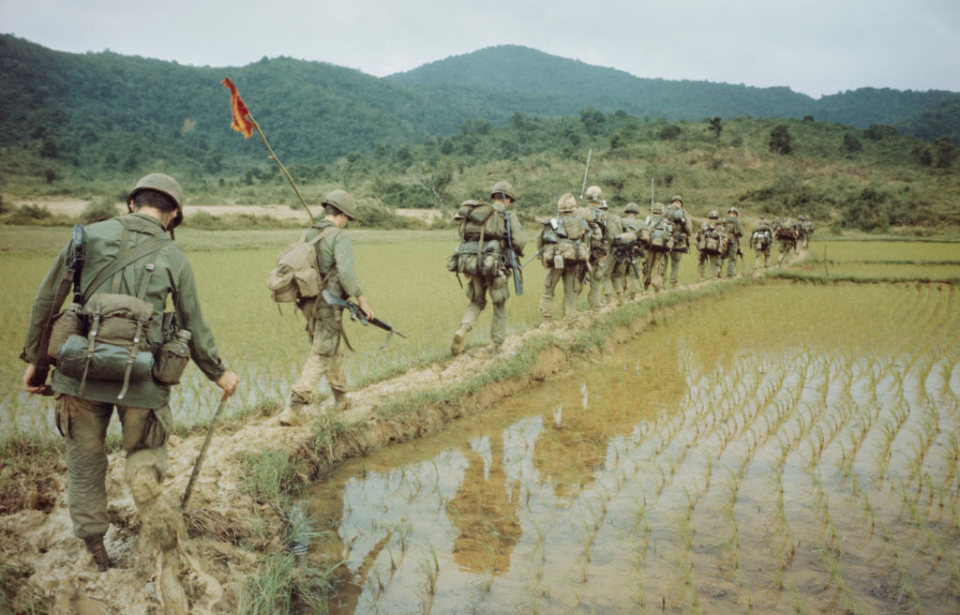The Vietnam War is notorious for the guerrilla warfare that the American forces found themselves ill-prepared for. The Viet Cong, fighting on their home turf, exploited this advantage by masterfully crafting and deploying booby traps. What made these tactics particularly effective was not only their cost-efficiency, but also the ingenious use of bamboo, which often evaded detection by the mine detectors equipped by the United States.
The primary objective of these traps was not to kill, but to maim, a cunning strategy that forced American soldiers to care for their wounded comrades, thereby slowing their progress. This already challenging situation was exacerbated by the deployment of secondary traps that targeted those attempting to assist the injured.
It’s alleged that approximately 11 percent of fatalities and 17 percent of injuries among US troops between 1969-70 resulted from encounters with these traps and mines. In 1965, this figure had been at a staggering 70 percent.
These insidious booby traps also had a profoundly damaging psychological impact on the soldiers, significantly eroding their morale. In addition to navigating the treacherous jungle terrain, they were constantly on edge, vigilant for well-concealed Viet Cong booby traps.
Bow trap
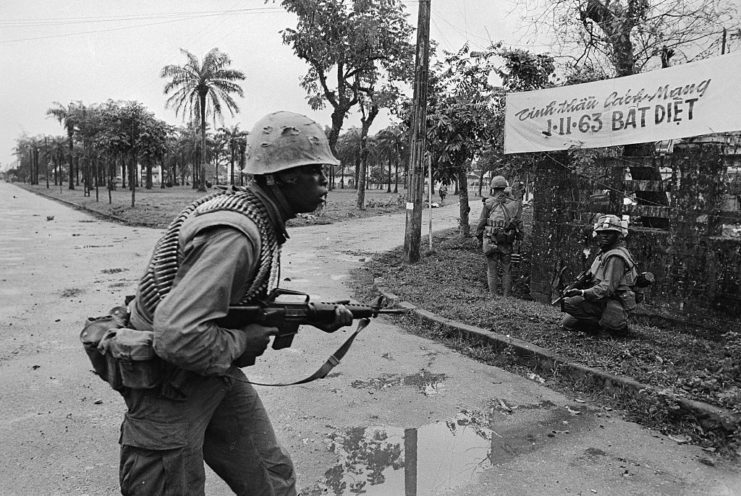
The bow trap was a simple, yet effective booby trap employed by the Viet Cong during the early days of the Vietnam War. A bow, pulled taut and prepped to launch, was attached to a tripwire. When an American soldier set it off, the bow released right where they were standing, resulting in a direct hit to the middle of the body.
Additionally, the some guerrillas set up this type of trap within a small pit. In these instances, the bow was angled upward, so the projectile would strike the enemy in the lower extremities.
Punji sticks
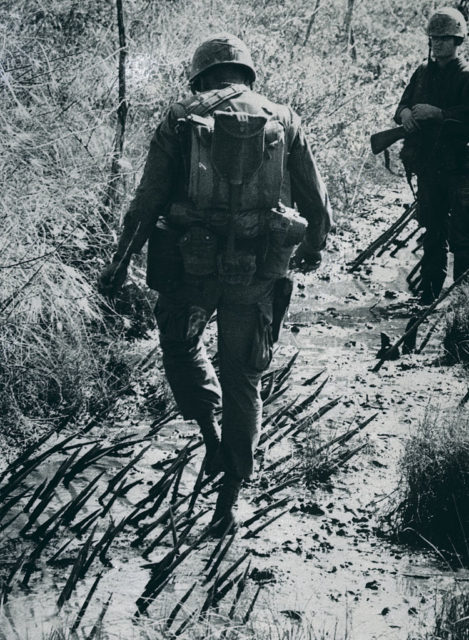
Punji sticks, also known as punji stakes, were a common booby trap deployed by the Viet Cong. The sharpened bamboo, wooden and sometimes metal stakes were often coated in feces or urine, with the goal of causing an infection in their victim. They could also be coated with poisonous substances from animals and plants.
Punji sticks were placed pointing upright at the bottom of a hole, before being covered with material that would camouflage them. When a US soldier broke through the flimsy cover over the hole, they would step on the spikes at the bottom and suffer injuries to their feet and legs.
This particular booby trap could be made worse in two different ways. The first was installing them at a downward angle, along the sides of the hole. When these extra stakes were added, it became difficult for the victim to get themselves out without causing further injury to themselves. This often resulted in the slowing down of their unit while efforts were made to free them.
A second way was by digging another hole next to the one equipped with the punji sticks, with the aim being to trap a second combatant with little additional effort. When a soldier came to rescue his injured comrade, he’d fall into the adjacent hole and become trapped.
Along with physically injuring American troops, punji sticks were also effective at hurting the overall morale of those serving within Vietnam’s dense jungles.
Bamboo whip
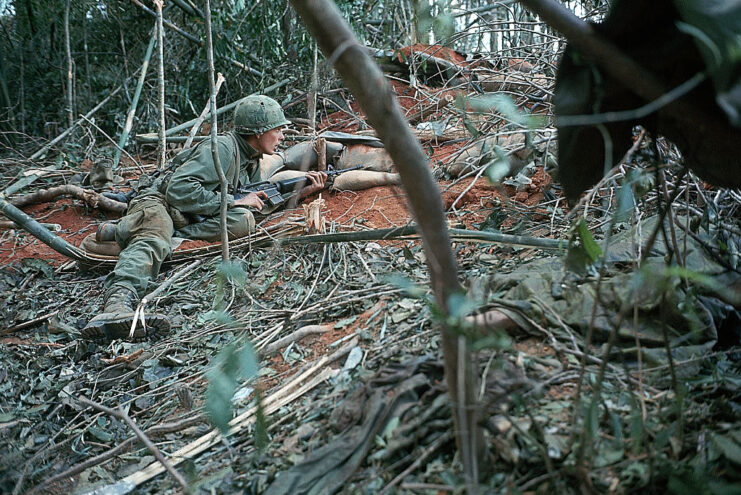
Bamboo whips were another brutal booby trap employed by the Viet Cong. A bamboo pole was attached to a tripwire and pulled back with a lot of tension. The pole had foot-long spikes attached to it, so when the tripwire was triggered, whoever tripped it would be impaled by the spikes as the pole whipped forward.
According to We Are The Mighty, the pole and its spikes could travel up to 100 MPH. As with punji sticks, the spikes could be covered in poisonous material to further impact the victim’s ability to heal.
Swinging mace
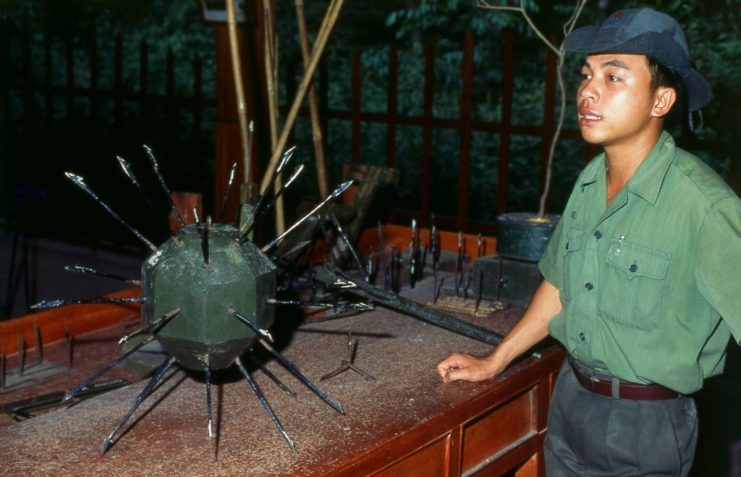
The swinging mace functioned in a manner akin to the bamboo whip. Instead of being affixed to a pole, however, it featured spikes mounted on a 24-inch sphere made of clay, wood or metal. Activation was triggered by a tripwire. Typically, the ball weighed in excess of 40 pounds.
This represented one of the more ruthlessly effective strategies employed by the Viet Cong. When the concealed ball was set into motion, gravity propelled it downward from a tree, causing grievous injuries to a soldier’s upper body, with a particular focus on their head and upper torso.
Tiger trap
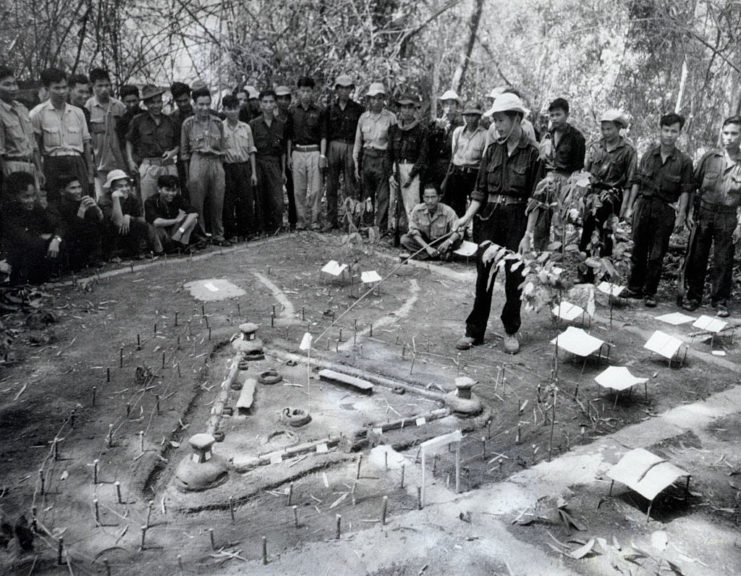
The tiger trap was another Viet Cong booby trap that, like the swinging mace, caused significant injury to a soldier’s upper body. The trap was sprung when the intended victim triggered a tripwire, causing a wooden plank imbued with metal spikes to fall on them.
This was made all the more brutal by the addition of weighted bricks or other objects on the board.
Snake pit
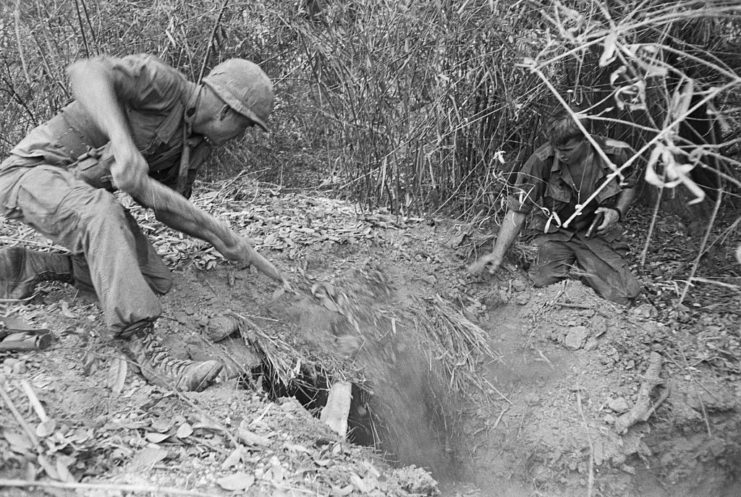
Snake pits were primarily used within the Viet Cong’s tunnel systems.
A poisonous snake would be attached to a piece of bamboo, and when released on the victim would place the reptile in the perfect location to attack. Snake pits were encountered by American “tunnel rats,” but the Viet Cong would put snakes in other locations, too, such as in their bags or in old weapons caches.
Bamboo pit vipers were a common snake used by the Viet Cong. Within a few minutes of being bitten, the flesh surrounding the bite turned necrotic, swollen and extremely painful. However, the Malayan krait was the most infamous, earning the nickname, the “two-step snake,” sometimes mischaracterized as the “three-step snake.” This is rooted in a myth that a soldier bitten by one was killed in the short time it took him to move two steps.
Cartridge trap
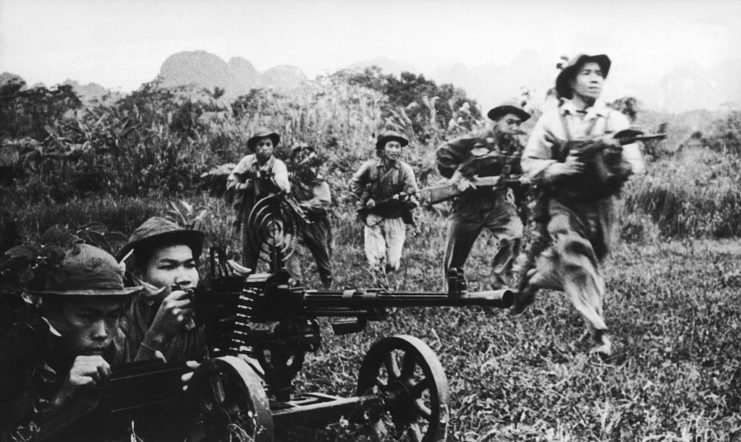
Cartridge traps operated in a similar way to punji sticks, in that they were placed within a hole in the ground. An ammunition round would be set within a tube made from bamboo, with a nail and wooden board placed underneath to act as a mock firing pin. Camouflage was then placed overtop to prevent enemy soldiers from detecting it in advance.
When they stepped on the booby trap, the soldier’s weight would activate the ammunition and fire it through their foot. As such, these were sometimes called “toe-poppers.” The extent of the injury was largely based on the size of the shell. Smaller ones often left men permanently disabled, while larger shells were fatal.
Grenade-in-a-can
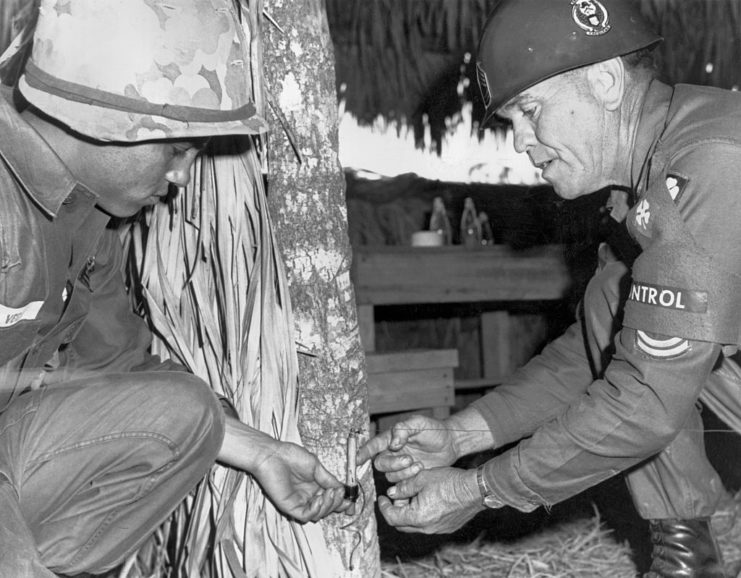
As the name indicates, the grenade-in-a-can was constructed by placing a grenade, with its safety pin removed, into a can, which held down the striker lever. A tripwire was then attached and, when tripped, would pull the explosive out of the can and cause it to detonate.
This type of trap could either be constructed with a single can and a stake, or with two. If two cans were used, they were mounted on trees on either side of a path, with the tripwire running between them. These booby traps were typically positioned in a stream and along the entrances to the Viet Cong’s tunnels.
Rigging war trophies
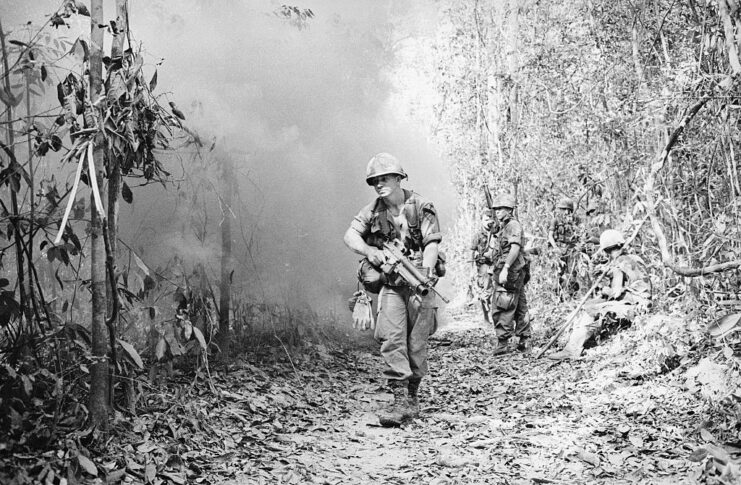
These booby traps were created based on the fact that American troops enjoyed capturing the flags of their enemies. When Viet Cong guerrillas were forced from their bases, they’d rig their flags with explosives, which detonated when the US soldiers took them down.
More from us: Cessna A-37 Dragonfly: The Forgotten Legend of Vietnam
The Viet Cong knew the Americans also enjoyed taking other items as war trophies. As such, they rigged them with similar explosives, so that, if the enemy combatants wanted to take anything from abandoned camps, the explosives would detonate, causing additional casualties.
